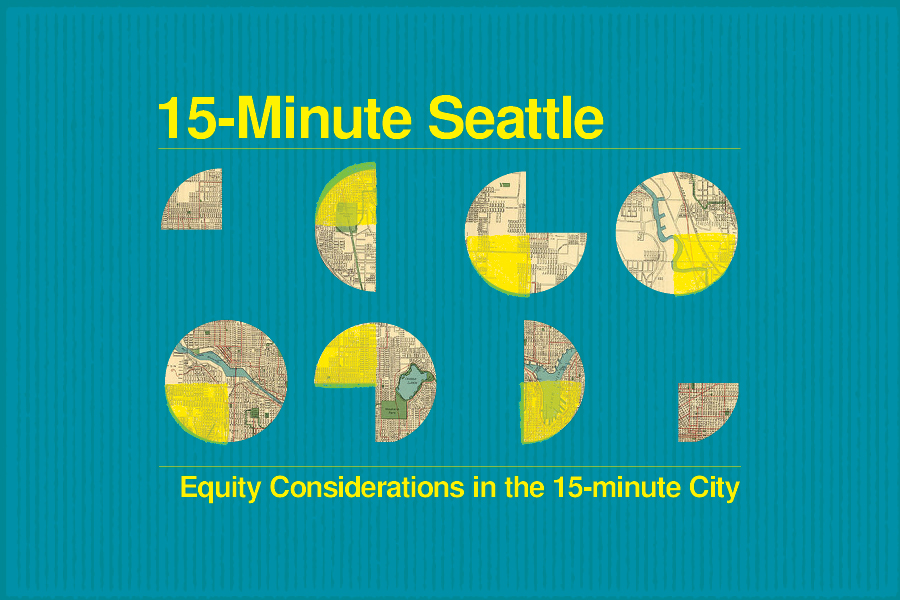
Urban Design Forum: Equity Considerations in the 15-Minute City

Seattle's current growth strategy has led to displaced individuals and communities and starkly unequal outcomes based on race and income level. Can our new growth strategy address these historical wrongs? How can we ensure that planning for Seattle's future means planning for everyone?
In line with its comprehensive plan, Seattle has focused most of its job and housing growth into roughly 30 “Urban Villages” and “Urban Centers” over the past 25 years. While the Urban Village growth strategy has increased density and walkability in these areas and organized an increasingly connected transit network, it has also contributed to displacement in these areas of focused growth while contributing to skyrocketing housing costs and inadequately addressing the large swaths of Seattle that remain auto dependent.
As Seattle prepares to update its Comprehensive Plan, some question the future relevance of the Urban Village growth strategy and some look to the idea of the 15-minute city for guidance. Carlos Moreno, who first developed the concept, believes the 15-minute city is a new way to organize urban life that “supplies six urban social functions – to live, to work, to meet, to supply, to educate, to care, and to enjoy – within a close enough proximity to allow access by low-carbon means of mobility.”
While this vision would seem desirable for any complete neighborhood, years of vast disparity in community investments across Seattle have resulted in communities with a dearth of basic urban infrastructure, neighborhoods that have lost faith in top-down urban growth strategies regardless of how admirable their aspirations may be. In light of this fact, is the 15-minute city vision relevant to all of Seattle? How might trust be rebuilt between underinvested communities and the city? Is it possible to add places for people “to live, to work, to meet, to supply, to educate, to care and to enjoy” in traditionally underserved communities without displacing current residents?
Join us as we investigate the idea of the 15-minute city, equity, and neighborhood centers in Seattle and the Pacific Northwest.
Panelists:
- Teresa Mosqueda | Seattle City Councilmember | Budget Chair/Finance & Housing Chair
- Miguel Maestas | Housing & Economic Development Director of El Centro de la Raza
- Andrea H. Reay | President/CEO of South Seattle Chamber of Commerce
- Bill Cunningham | City Planner | Portland Bureau of Planning and Sustainability
This event is part of AIA Seattle’s 15-Minute Seattle: Creating Livable Places for All series.
EQUITY CONSIDERATIONS IN THE 15-MINUTE CITY
Wednesday, June 23 | 5:30 – 7:00 pm PT | Online

When a city grows slowly, a neighborhood’s old building stock can provide affordable housing and working locations for occupants displaced by new construction. However, when a city reshapes itself quickly, and the naturally occurring affordable spaces “run out”, what happens to the residents and businesses that cannot afford the new higher costs of living and working in the city?
Questions?
Contact Kirsten Smith, Manager of Policy and Advocacy at AIA Seattle




